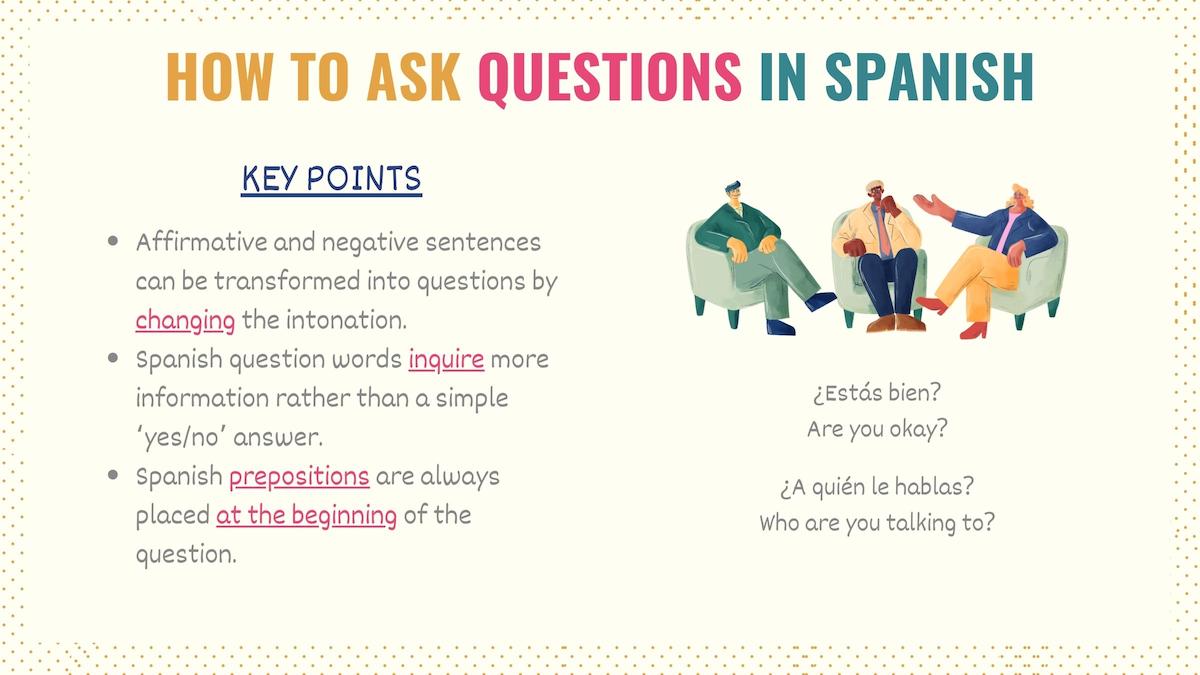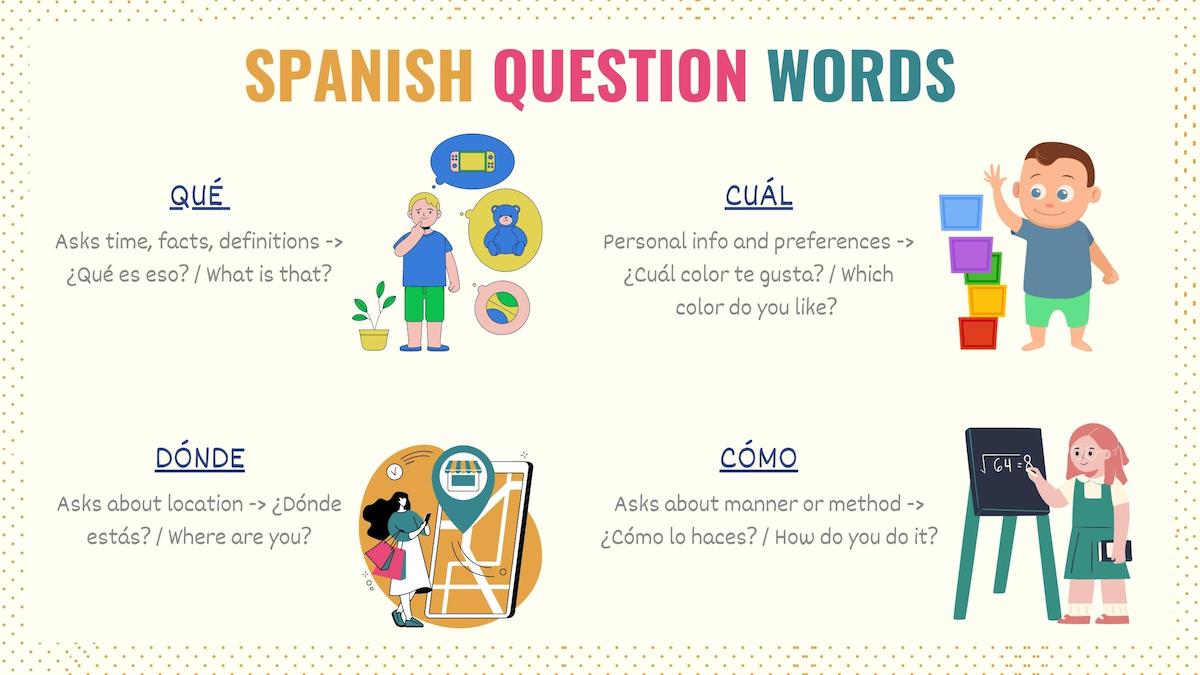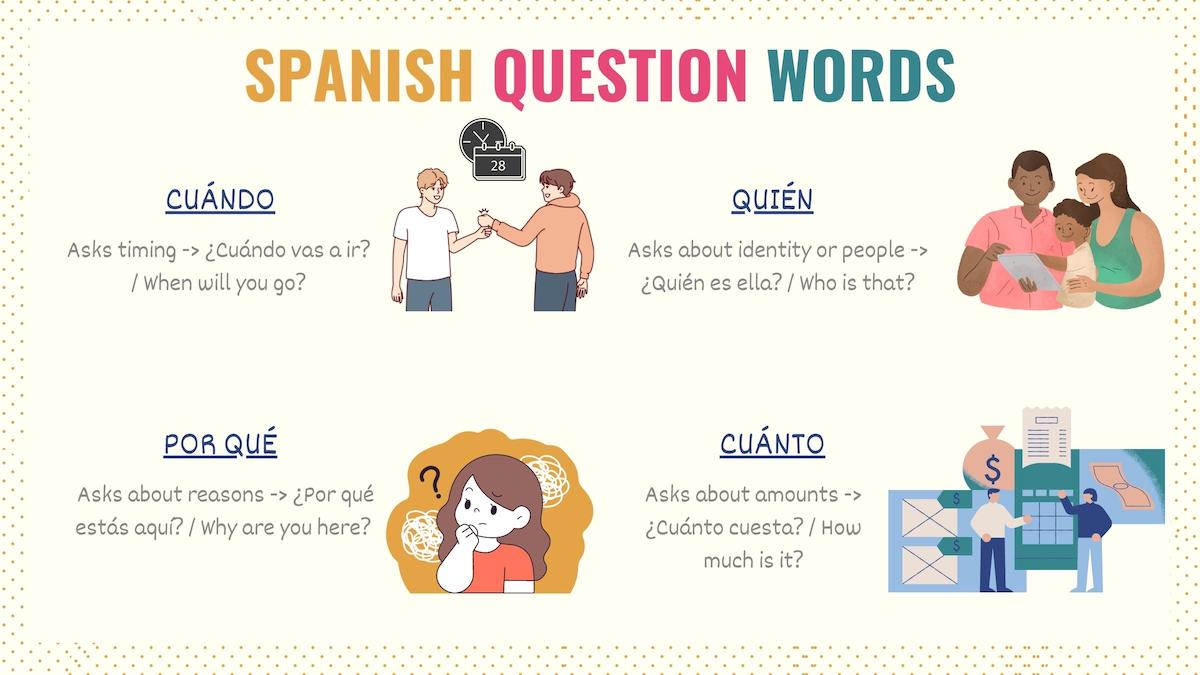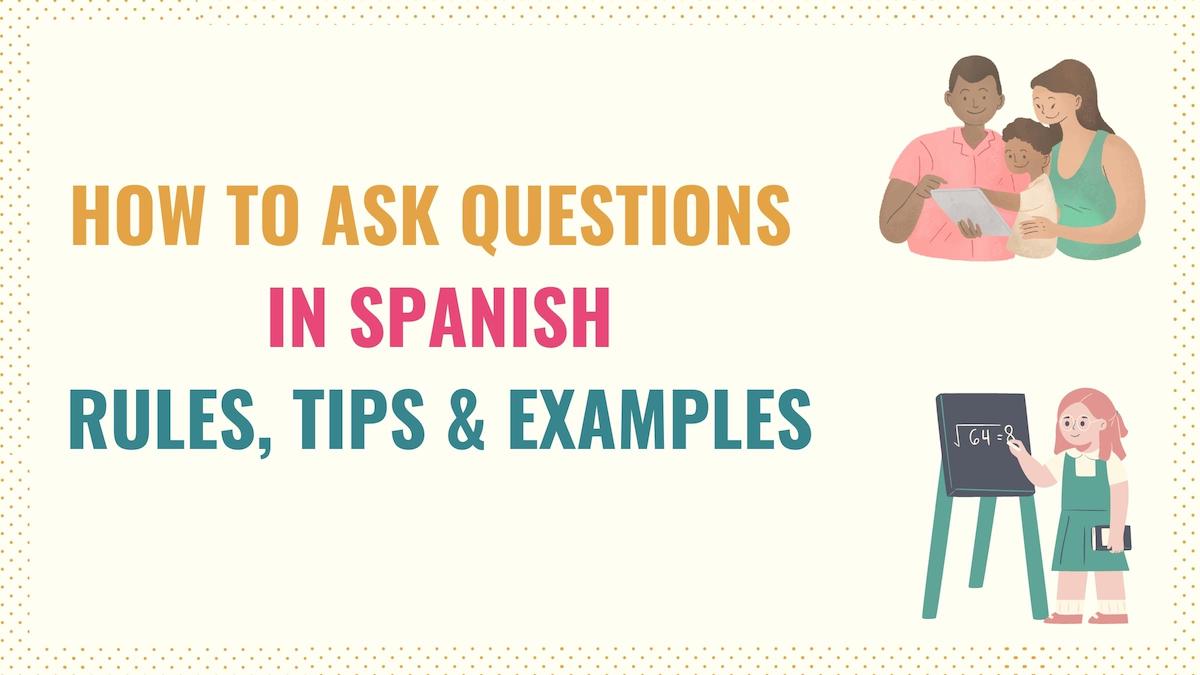Being able to ask questions in Spanish is an essential and fundamental skill that can be handy in everyday situations. As a result, in this guide, you’ll learn the word order, elements, and rules needed to form Spanish questions.
How to Ask Questions in Spanish

In Spanish, there are two ways to ask questions depending on the information you want to obtain. For questions that can be answered with a yes or no (yes/no questions), you can simply change the intonation of a negative or affirmative statement.
For example:
| Statement | Question |
|---|---|
| Te gustan los gatos. You like cats. |
¿Te gustan los gatos? Do you like cats? |
| Ellos saben dónde está el museo. They know where the museum is. |
¿Ustedes saben dónde está el museo? Do you guys know where the museum is? |
Similar to English, when asking questions in Spanish, the intonation rises toward the end.
When asking questions that request information, you must use Spanish question words:
- ¿Qué? – What?
- ¿Cuál? – What? / Which?
- ¿Cuándo? – When?
- ¿Dónde? – Where?
- ¿Cómo? – How?
- ¿Quién? – Who?
- ¿Por qué? – Why?
- ¿Cuánto? – How much?
Here are some examples:
¿Cómo están, niños?
How are you, kids?
¿Quién es esa chica?
Who is that girl?
¿Por qué te gustan los gatos?
Why do you like cats?
¿Cuándo vamos a ir al cine?
When are we going to the movies?
As you may have noticed, Spanish questions must always be surrounded by two question marks. This is an important rule you shouldn’t overlook in writing environments.
Below, we’ll study the correct word order to ask questions in Spanish.
Take Note: Unlike English, Spanish doesn’t use auxiliary verbs, such as do or does, to ask questions.


Word Order When Asking Questions in Spanish
When transforming an affirmative or negative sentence into a question, the word order is the same since you’re just changing the intonation. Just as a quick reminder, this order should be:
(Subject)+ [verb] + [complement]
¿Ana habla español?
Does Ana speak Spanish?
¿Tienes hambre?
Are you hungry?
If you’re using question words, the order should be:
[Question word] + [verb] + [complement]
¿Por qué está enojada Ana?
Why is Ana mad?
¿Qué comieron ayer?
What did you guys eat yesterday?
Unlike English, Spanish prepositions are always placed at the beginning of the question. Here is the word order you must follow:
[Preposition] + [question word] + [verb] + [complement]
¿De dónde eres?
Where are you from?
¿A qué hora es tu cita con el doctor?
What time is your appointment?
¿Para qué quieres mi teléfono?
What do you want my phone for?
Take Note: Subject pronouns in Spanish can often be omitted since the verb conjugation conveys who the subject is. When it comes to questions, use subject pronouns to clarify who you’re talking to, approach and address someone for the first, or add emphasis to the question.
Key Points
Asking questions in Spanish is an essential skill that can help you engage in conversations or express your doubts about something. Here is a summary of how to ask questions in Spanish:
- An affirmative or negative sentence can be transformed into a question by changing the intonation.
- Questions in Spanish must be surrounded by two question marks.
- Question words in Spanish are used to request information rather than a ‘yes/no’ answer.
- Spanish prepositions are never placed at the end of the question.
- In Spanish, you do not need auxiliary verbs to ask questions.

